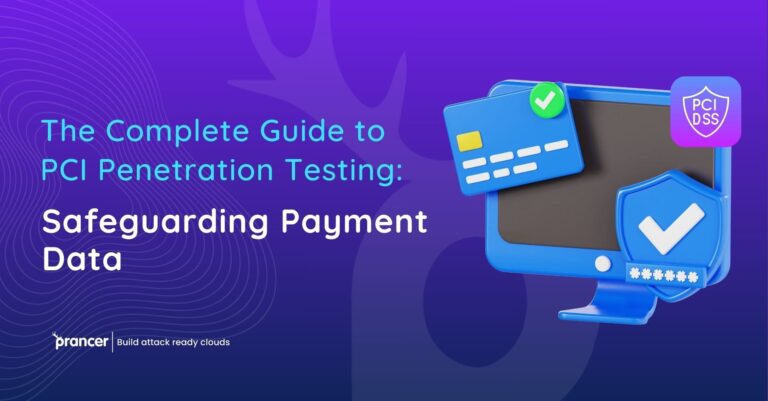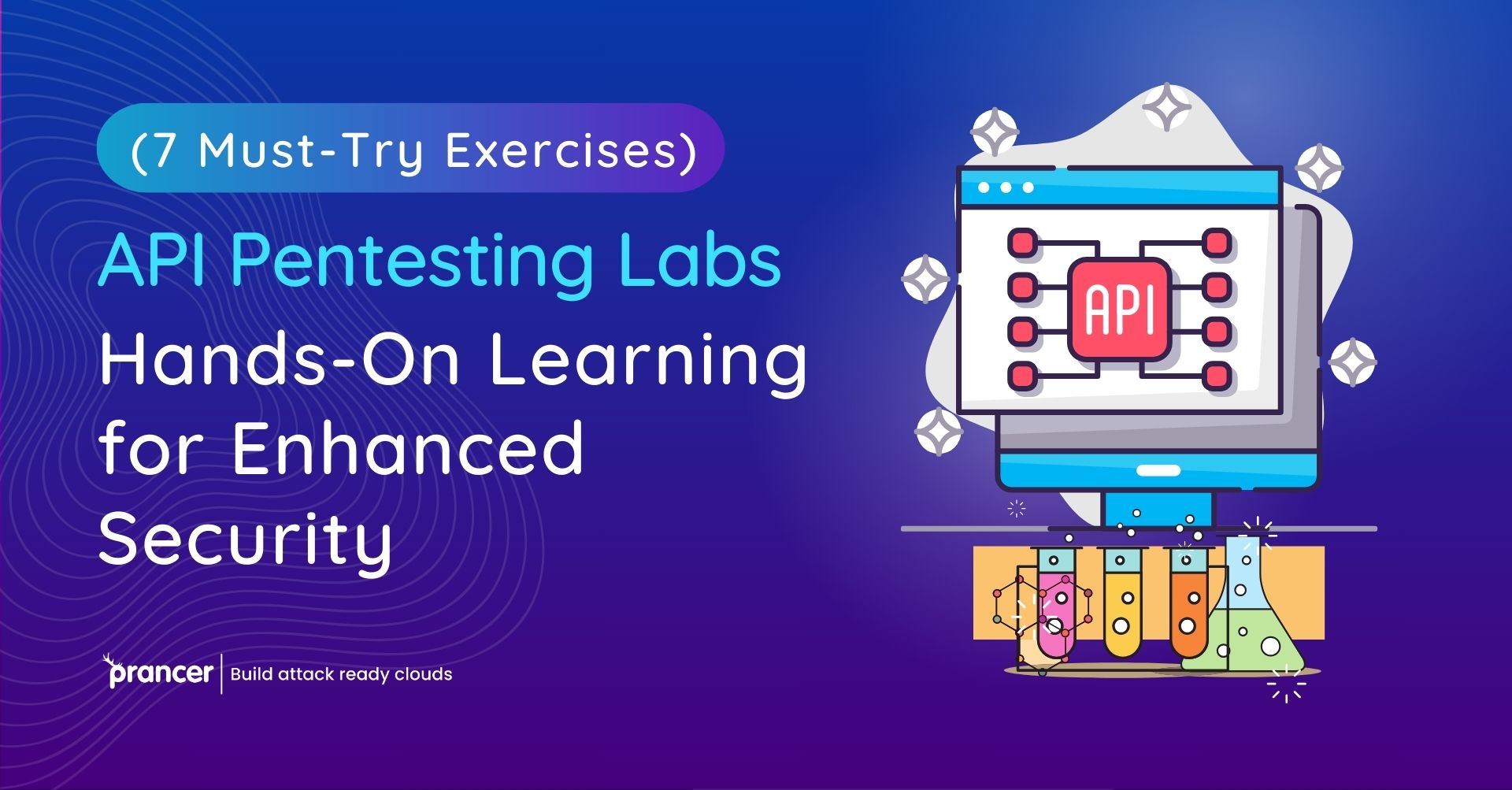

Navigating the ever-evolving sphere of cybersecurity requires professionals to be well-equipped with the latest tools and methodologies. APIs, pivotal to today’s software landscape, are frequently targeted by adversaries, thus necessitating comprehensive security measures. API pentesting labs offer cybersecurity experts a practical approach to grasp the intricacies of API security. This piece elucidates seven must-try exercises in labs and underscores the influential role of Prancer in cloud security, coupled with the undeniable importance of automated penetration testing.
What are API Pentesting Labs? For clarity, API penetration testing refers to a meticulous analysis of APIs to pinpoint vulnerabilities or potential security lapses. Essentially, API pentesting labs present an environment for in-depth exploration and rectification of these vulnerabilities, arming professionals with first-hand insights and experience.
Prancer’s capabilities in enhancing API pentesting labs are unparalleled:
When woven into API pentesting labs, automated penetration testing tools amplify the learning trajectory:
In a fast-changing world of cybersecurity, API testing labs are important for teaching people how to fight against threats that attack APIs. These labs concentrate on hands-on activities like dealing with sign in problems, fighting off injection attacks, adding speed limits and keeping secret information safe. They also explore security in token-based login, weaknesses of OAuth 2.0 system and protection needed for webhooks. Prancer helps these labs a lot by adding in automated security checking tools, making sure they follow the right safety rules and giving good all-round checks for weaknesses. This mix of practice and using machines gets people ready for the complications they might find in real-life situations dealing with API security.
Advanced API Penetration Testing: A Comprehensive Approach with Automation
Widening the Scope of API Penetration Testing
In the modern cybersecurity environment, API penetration testing labs are rapidly developing due to growing complexity and intensity of attacks on APIs. Intertion of automated penetration testing tools, especially those created by Prancer is having a critical impact on making these labs ore effective and efficient.
Advanced API Pentesting Lab Exercises
Securing RESTful and SOAP APIs:
Take a close look at the security challenges specific to RESTful and SOAP APIs, addressing both common threats as well more advanced ones.
Handling Complex Authentication Mechanisms:
Being able to secure complex authentication techniques such as OAuth, OpenID Connect and SAML which help combat authorisation flaws.
Advanced Injection Attack Prevention:
Beyond SQLi and XSS, exploring more advanced injection attacks in depth that involve NoSQL injections and Command injections.
Microservices and API Gateway Security:
Security of microservices architectures and API gateways, key elements in contemporary cloud-native applications.
Secure API Design Principles:
Implementing those secure API design principles starting from the physical up to build innately secure APIs.
Automating API Security Testing:
Using Prancer tools to perform security testings of the developed and production APIs in a continuous fashion.
Prancer’s Role in Improving API Security.
Prancer’s innovative solutions are reshaping the approach to API security in penetration testing labs:
Real-Time Vulnerability Detection:
Prancer’s tools permit discovering the occurrence of vulnerabilities in APIs and then immediately.
Compliance and Regulation Adherence:
Automating assessments to ensure that APIs are abiding by the pertinent industry standards and regulations such as GDPR and HIPAA.
Customizable Testing Frameworks:
Providing flexible testing frameworks that can be adapted to diverse API architectures and security needs.
Advantages of Automated Penetration Testing in API Protection
Automated penetration testing brings a host of benefits to API pentesting labs:
Comprehensive Coverage:
Automated solutions provide complete coverage of all API endpoints, including the ones that might be missed during manual testing.
Scalable and Efficient Assessments:
Through automation, valuation of APIs can be done in a scalable manner that is not dependent on their size and complexity.
Consistent and Repeatable Testing:
Automated tests deliver stable and replicable test procedures, which are essential for the continued preservation of API security.
Adjusting to New API Security Threats
Securing GraphQL APIs:
Addressed at the peculiarities of securing GraphQL APIs, which have become increasingly widespread.
Defending Against API Abuse and Misuse:
Building strategies for API abuse and misuse prevention, such as oversharing data or using functionality incorrectly.
Responding to Zero-Day Vulnerabilities:
Fast action to zero-day vulnerabilities in APIs, use of automated tools for rapid detection and mitigation.
Automating API Penetration Testing Trends in the Future
AI-driven Security Analysis:
Using AI security analysis in automated penetration testing can help predict and prevent advanced API attacks.
Continuous Integration and Deployment (CI/CD) in API Development:
Application of automation API security testing through CI/CD pipelines to ensure continuous assurance in the development and implementation environment for APIs.
Cloud-Native API Security Solutions:
Forming cloud-native API security solutions which work well with the clouds and provide greater safety in a cloud environment.
Prancer’s Vision for API Security
Ahead, Prancer aims to continue the evolution of its automated penetration testing tool for APIs in order to face today’s challenges. By using its focus on advanced threat modeling, real-time detection functions as well as seamless integrations with development workflows, Prancer aims to keep theen question of API security ahead in front and thus provide powerful solutions for protecting against an ever changing cybersecurity world.
Advanced Threat Identification: Automated tools in API Pentesting Labs are integral to finding subtle threats such as APTs.
Enhanced Security Protocols: The integration of Prancer’s automated tools strengthens measures towards combating sophisticated cyber threats.
CI/CD Pipeline Integration: Highlights the consistent integration of security throughout CI/CD pipelines using automated penetration testing.
Cloud-Native Security Solutions: Is dedicated to developing scalable and flexible security measures for APIs in cloud-based systems.
Realistic Attack Simulations: Uses Prancer’s set of tools for simulating live cyberattacks, increasing the realism in testing environments.
Data Protection and Privacy: Focuses on safeguarding confidential information in APIs, which are the main privacy issues.
Knowledge Expansion on API Security: It emphasizes the need to be well acquainted with API security best practices, such as secure design principles.
Utilization of AI and ML: Includes artificial intelligence and machine learning in penetration testing to implement advanced threat prediction and response automation.
Customized Testing Frameworks: It provides custom testing methods based on diverse API architectures.
Emphasis on Mobile and IoT API Security: Secures the APIs associated with the ever-growing network of mobile and IoT devices.
Collaborative Learning and Sharing: Fosters knowledge sharing among the cybersecurity community toward addressing new threats.
Holistic Security Approach: There are advocates that prefer a broad-based security approach entailing the technical, administrative and educational aspects.
Streamlined Reporting with Automation: It automates the penetration testing documentation process for timely efficiency.
Adherence to Regulatory Standards: Guarantees that automated testing conforms with the increasing industry rules and compliance standards.
User-Friendly Tool Interfaces: Is concerned with improving the accessibility of automated penetration testing tools that are accessible to a larger audience.
Approach to Automating API Security
The future of API security relies on automated penetration testing, particularly with Prancer’s groundbreaking tools. This method, not only strengthens API security but also facilitates prevention practices centered on cybersecurity in the digital world.
In summation, API pentesting labs bestow a comprehensive, hands-on approach to refining API security acumen. Engaging in these exercises, armed with potent tools like Prancer and automated penetration testing, fortifies one’s API defenses. In the ever-challenging realm of cybersecurity, hands-on expertise amalgamated with advanced knowledge remains the ultimate shield against looming cyber perils.
